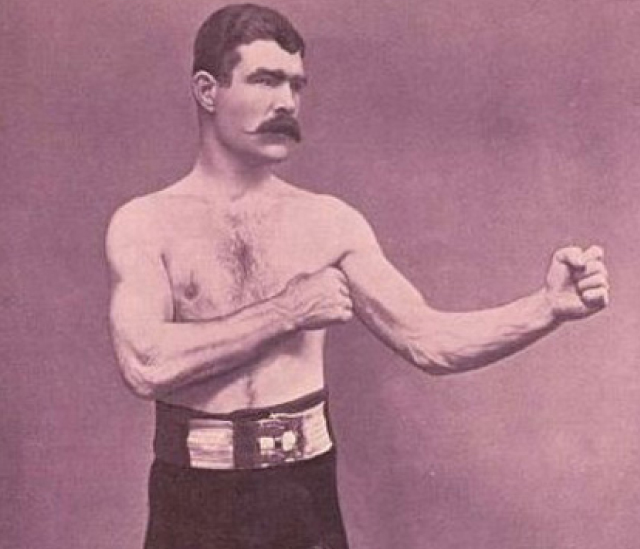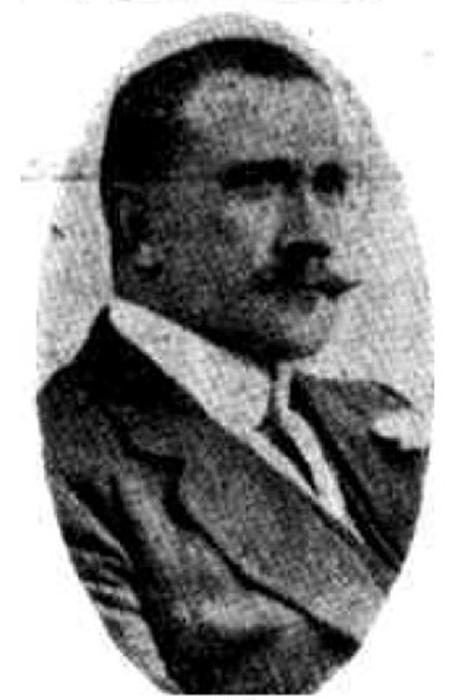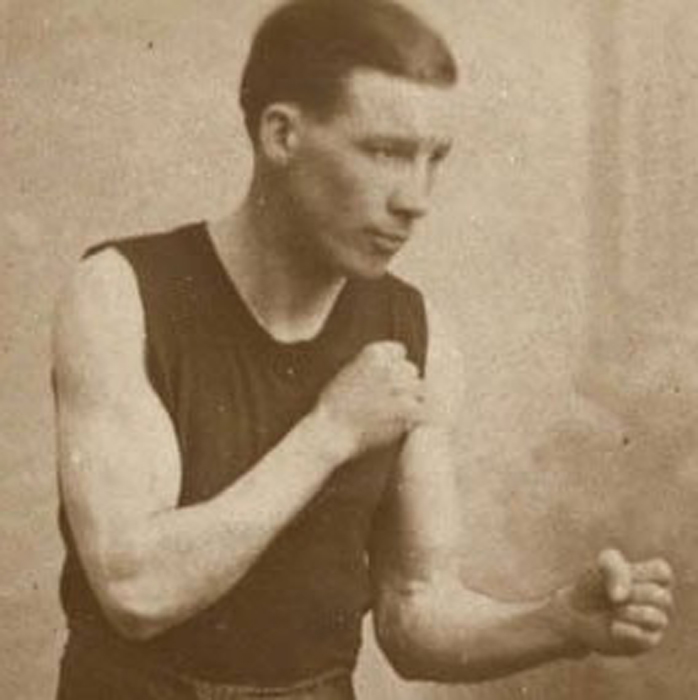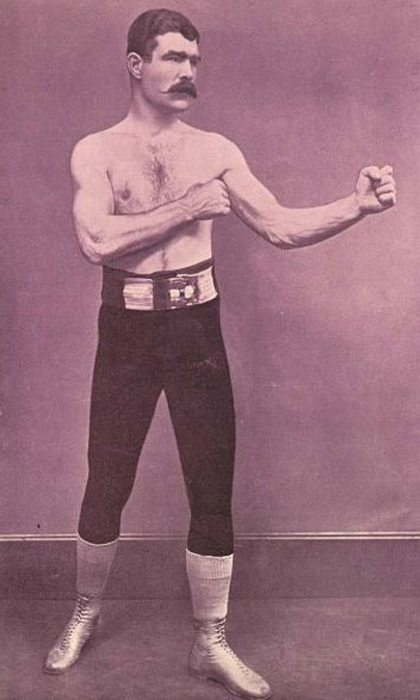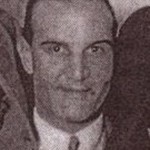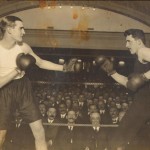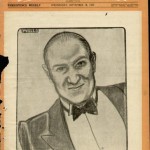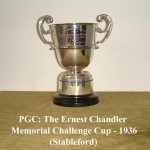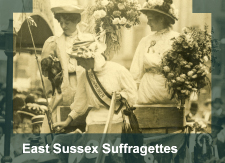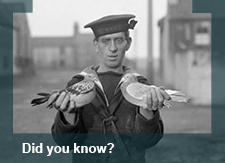In 1917, the troops stationed at the North Camp in Seaford were treated to a unique sporting afternoon when three world champions gathered to fight.
Two huge military camps had been built in Seaford in Autumn 1914, each to accommodate thousands of men training for the front. Entertainment was quite staid with piano concerts, a YMCA Hut, Catholic Recreation Room and Reading & Writing Hut. There was also the occasional trip to the sea for ‘Bathing Parade’ where hundreds of naked men braved the cold waters of Seaford Bay.
The men were used to physical exercise as they not only had drill but also had to practice digging trenches on the Downs around the town. Boxing was a popular sport within the camp so a spectacular boxing match was arranged.
Lord Glanusk (Colonel William Bailey) CB, DSO was the patron of the ‘London Command Deport Boxing Tournament’ which took place on a sunny Friday 1st June in the Boxing Arena at the North Camp at Seaford. The boxing arena was situated in a converted chalk-pit and could accommodate 6,000 spectators (although many more were able to watch by climbing on to the roofs of nearby army huts).
This was to be an important event and the referees were none other than Arthur Bettinson and Eugene Corri of the National Sporting Council (NSC). Bettinson, a former British Lightweight Champion, founded the NSC in 1891. He standardised weight divisions and arranged for the presentation of championship belts that had been donated by the first NSC President, Lord Lonsdale. (In 2011, along with Mike Tyson, Sylvester Stallone and Sir Harry Carpenter, Bettinson was inducted into the International Boxing Hall of Fame.)
Corri was an internationally famous referee who invigilated in several World Championship fights.
After entertainment from the band of the Dragoon Guards, the boxing started with some preliminary rounds followed by a ten round contest between Staff Sergeant Zimmer and Harry Jones of the Royal Fusiliers. Zimmer was one of the instructors at the camp and was able to beat Jones on points.
Next was a six round fight between Corporal Goggins of the Royal Fusiliers and Corporal George Baker, a Canadian who had been the amateur (ABA) featherweight boxing champion of Britain from 1912 to 1914. Baker knocked out Goggins in the fifth round. (After the war he regained his title from 1919 to 1921.)
The star event however was a match between two champions, Frank Slavin (billed as the ex-heavyweight champion of the world) and Ernest Chandler (who, at that time, was the serving heavyweight champion of the world). Prior to the match, Major James Fowles told the assembled crowd how honoured he was to preset the two men, especially ‘Paddy’ Slavin who, almost 25 years ago to that day, had fought Peter Jackson in one of the most celebrated fights of the Victorian era. He said that Slavin had not put on gloves since 1892, but had decided to fight for the sake of old friends. This was not quite true as records show that Salvin had taken part in at least 27 fights since that date including 3 in London.
Slavin, Australian by birth, started his career as a bare-knuckle fighter. He became Champion of New Zealand in 1888 and one of his fights that same year was refereed by none other than the Marquis of Queensbury. He was former all-England bare-knuckle fighter but his most famous match was against the black boxer Peter Jackson for a purse of £2,000 (a remarkable sum at that time). Jackson trained at Brighton and was heralded as the ‘Coloured Pugalist’. Slavin was the favourite to win but had aggravated his opponent by making racist remarks. Slavin lost dramatically which was made worse because he refused to be ‘beaten by a black man’ and threw in the towel.
After the fight, Slavin went to Canada to be a gold prospector. He had joined the Army aged 54 and and even spent time at the front at Ypres before his rheumatism caused him to be sent to Seaford where he worked as an instructor at the North Camp.
Chandler, on the other hand, was at the height of his boxing career and was only 26. He had been educated at the City of London School and boxed for the Stock Exchange Club, however, like Jackson, he did his training at Brighton. Three years earlier he had travelled to New York where he become the amateur Heavyweight Boxing Champion of the World. Not surprisingly he beat Slavin in just three rounds. There were many more boxing matches including a hilarious recreation of the first world championship fight in 1860. Seaford had never seen such excitement!
After the war, Chandler continued to fight, returning to the USA to fight the famous Jack Dempsey in 1925. He died under unfortunate circumstances in Brighton in 1936. His friend Sir Harry Preston, the owner of both the Royal York and the Royal Albion Hotels, became ill and, after doctors decided to attempt a blood transfusion, Chandler volunteered.
A few days after donating the blood Ernest was playing golf at his club, Pyecombe Golf Club. While playing, the small would on his arm from which the blood had been drawn, opened up. The wound became infected and Ernest died a few days later of septicaemia. Tragically Sir Harry Preston also died and Ernest never knew that his generous concern had been to no avail. To compound the tragedy for the Chandler family, a brother of Ernest was so shocked at the events that he suffered a heart attack and died within the same week of Ernest and Sir Harry. The brothers are buried in the Chandler Family vaults at Nunhead Cemetery, London.
- EV Chandler and Pat McEnroy exhibition bout c1912 – Image courtesy of Errol Chandler
- E.V. Chandler on front cover – Image courtesy of Errol Chandler
- PGC Ernest Chandler Memorial Challenge Cup – Image courtesy of Errol Chandler
To this day Ernest is remembered at Pyecombe Golf Club. They play an annual competition for the Ernest Chandler Memorial Cup. The floating trophy is actually the silver cup awarded to Ernest in 1911 when he won his first boxing (novice) title. The original boxing inscription is on the one side of the cup, the golf memorial is recorded on the other.
For more information on the fighting history of Ernest Chandler visit his family association’s website.
This story was originally submitted by Kevin Gordon, Seaford Museum, and then updated following information from Errol Chandler

